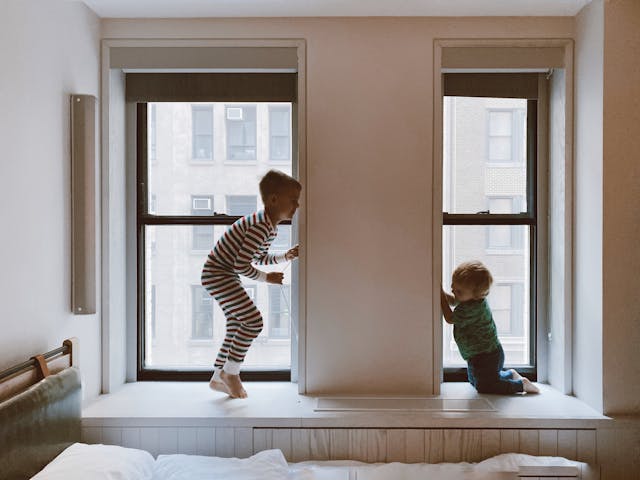As parents and homeowners, ensuring the safety of our children within the home is paramount. Unintentional injuries are a leading cause of childhood morbidity and mortality and many of these incidents occur within home. However, by implementing thoughtful home design strategies, homeowners can mitigate risks and create safer living spaces for their families. In this article, we’ll explore effective home design tips aimed at preventing childhood injuries, emphasizing risk management strategies to safeguard against common hazards.
- Assessing Potential Hazards:
Before diving into specific design solutions, it’s essential to conduct a thorough assessment of potential hazards within the home. This includes identifying common risks such as sharp corners, unstable furniture, electrical outlets, and hazardous substances. By understanding these hazards, homeowners can develop targeted risk management strategies to address them effectively.
- Creating Safe Zones:
Designating specific areas of the home as “safe zones” for children is an effective risk management strategy. This may include childproofing high-risk areas such as kitchens, bathrooms, and staircases with safety gates, cabinet locks, and outlet covers. By creating designated safe spaces, parents can provide children with areas where they can explore and play safely under supervision.
- Flooring and Surface Materials:
Choosing appropriate flooring and surface materials is crucial for preventing slips, trips, and falls, which are among the most common causes of childhood injuries at home. Opt for slip-resistant flooring in high-traffic areas and consider cushioned materials such as carpet or rubber flooring in playrooms and bedrooms to minimize the impact of falls.
- Furniture Placement and Stability:
Proper furniture placement and stability are essential considerations for reducing the risk of tip-overs and collisions. Anchor heavy furniture items such as bookshelves, dressers, and televisions to the wall to prevent them from toppling over onto children. Additionally, avoid placing furniture near windows or ledges to prevent falls.
- Window Safety:
Windows pose a significant risk of falls for young children, especially those located on upper floors. Install window guards or safety devices to prevent accidental falls, particularly in rooms where children spend time unsupervised. Additionally, consider using window locks or restrictors to control the opening width and prevent access to potentially hazardous areas.
- Stair Safety:
Staircases are a common site of childhood injuries, particularly for young children who are still mastering the skill of climbing and descending stairs. Install safety gates at the top and bottom of staircases to restrict access and prevent falls. Additionally, ensure that staircases are well-lit and free of clutter to reduce the risk of tripping.
- Child-Friendly Features:
Incorporating child-friendly features into home design can enhance safety and accessibility for young children. Consider installing lower light switches, reachable shelving and storage, and child-sized furniture to empower children to navigate their environment safely. Additionally, use rounded edges on furniture and countertops to minimize the risk of injuries from collisions.
- Bathroom Safety:
The bathroom is another area of the home that presents numerous hazards for young children. Install non-slip mats in bathtubs and showers to prevent slips and falls, and use temperature-controlled faucets to avoid scalding injuries from hot water. Store medications, cleaning products, and other potentially hazardous items out of reach and in locked cabinets.
- Outdoor Play Areas:
Outdoor play areas should also be designed with safety in mind to prevent injuries during playtime. Use soft, impact-absorbing materials such as mulch or rubber surfacing beneath playground equipment to cushion falls. Regularly inspect play structures for signs of wear or damage, and ensure that they meet safety standards and guidelines.
- Educating Children:
In addition to implementing physical safety measures, it’s essential to educate children about potential hazards and safety rules within the home. Teach children about fire safety, stranger awareness, and the importance of following household rules to minimize the risk of unintentional injuries. Encourage open communication and empower children to speak up if they encounter a safety concern.
By incorporating these home design tips and risk management strategies, homeowners can create safer environments for their families and reduce the risk of unintentional injuries in children. From assessing potential hazards to implementing childproofing measures and educating children about safety rules, proactive steps can significantly enhance the safety and well-being of children within the home. By prioritizing safety in home design, homeowners can provide children with the freedom to explore and thrive in a secure and nurturing environment.

